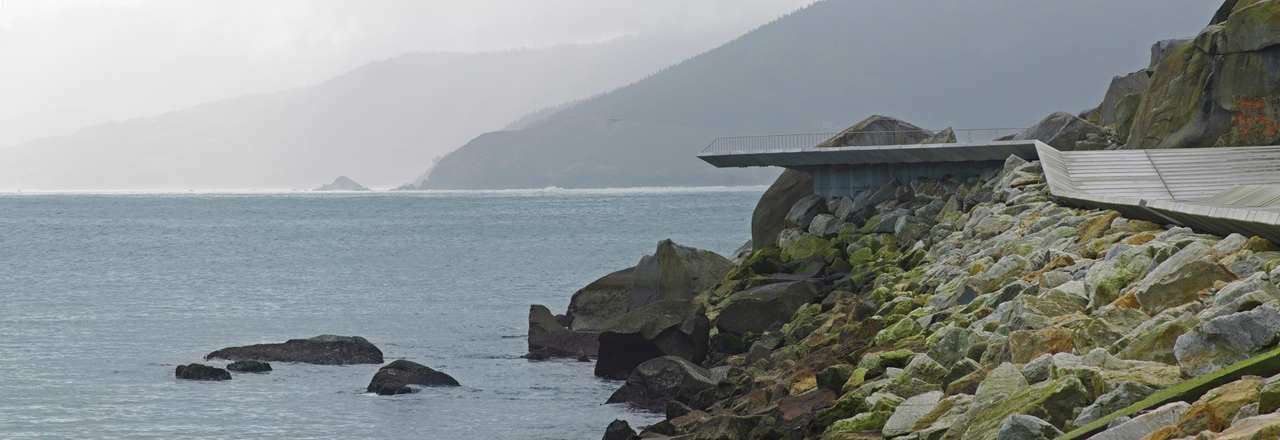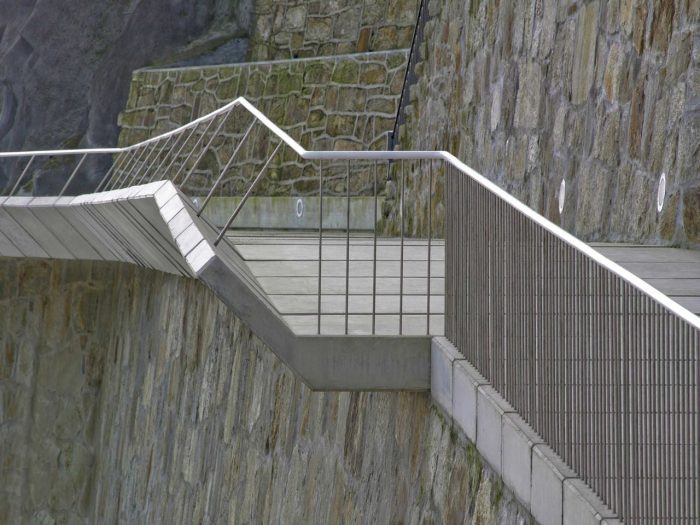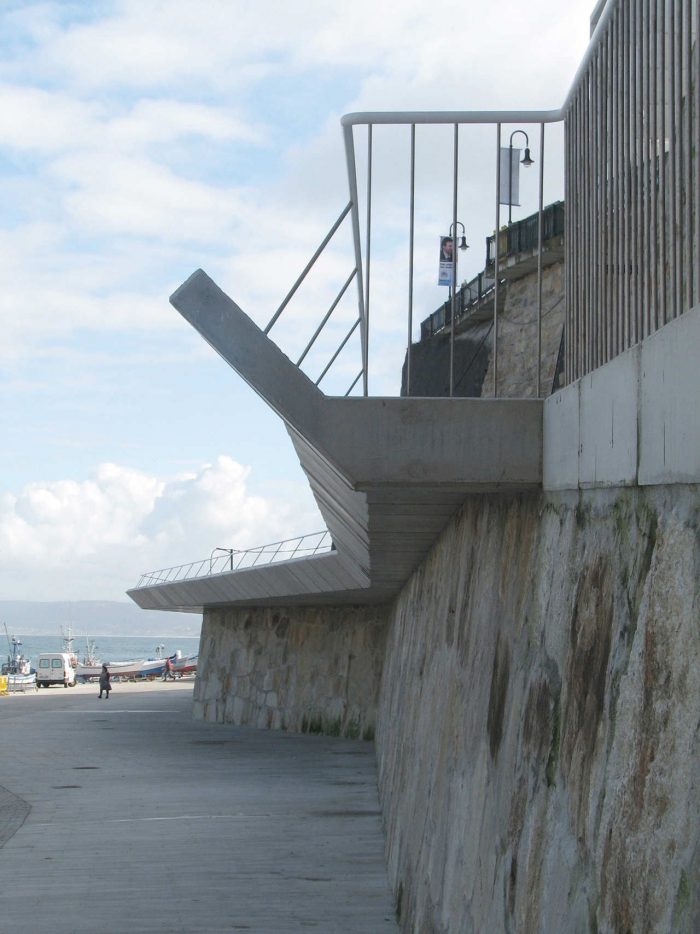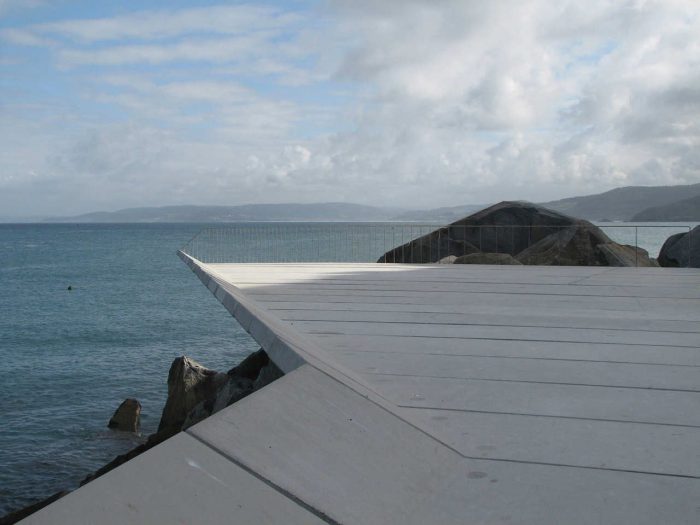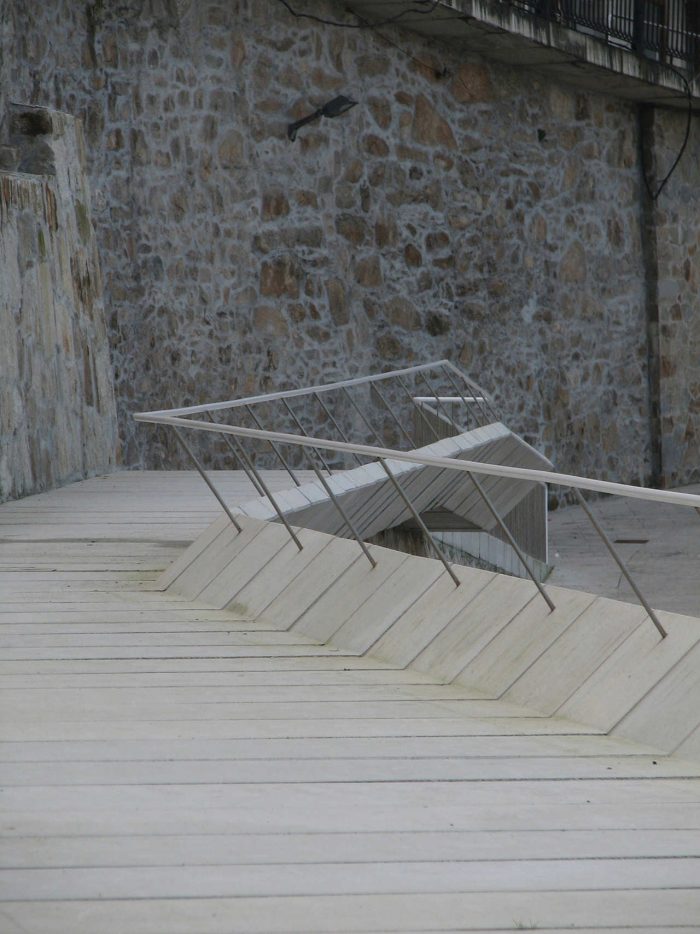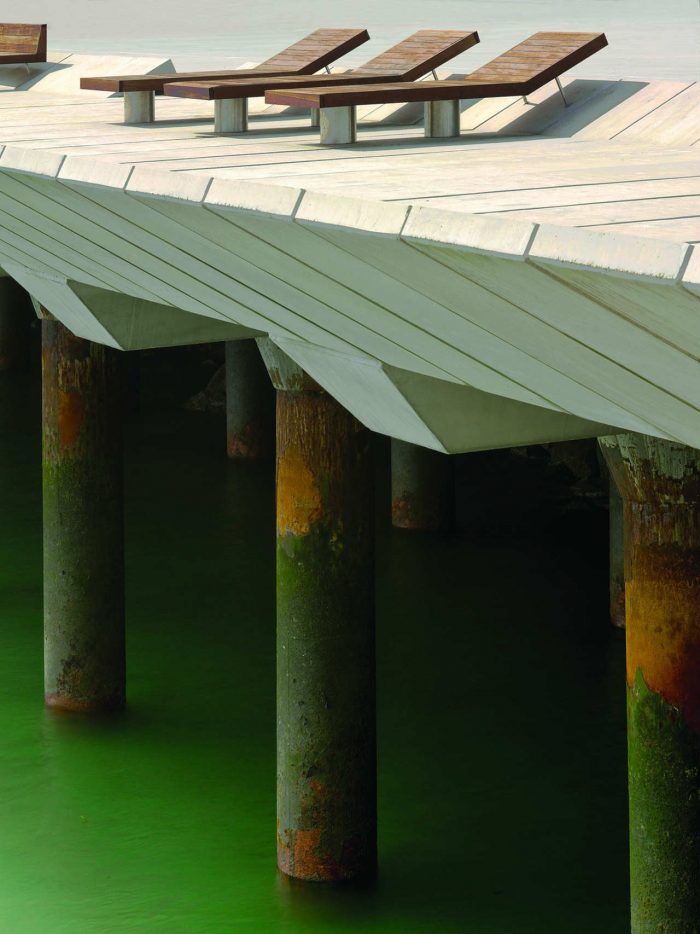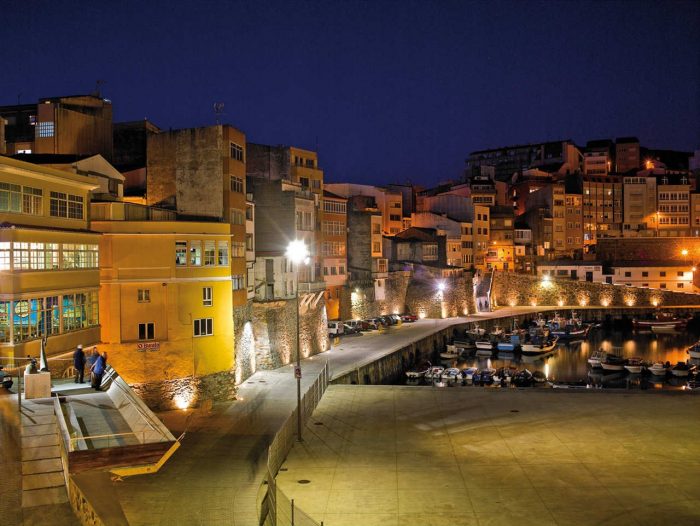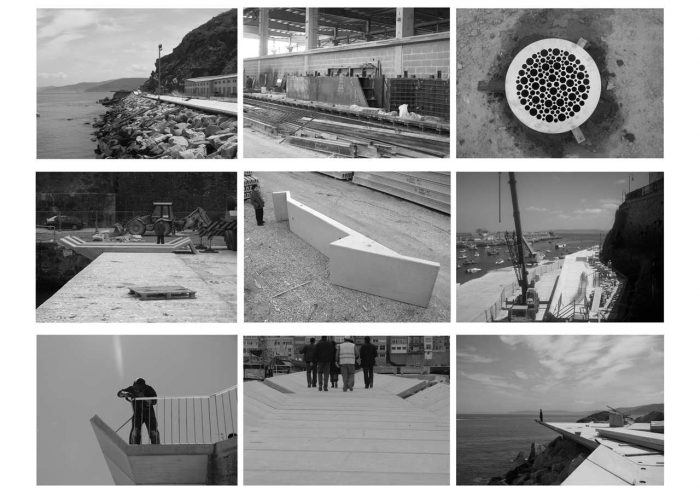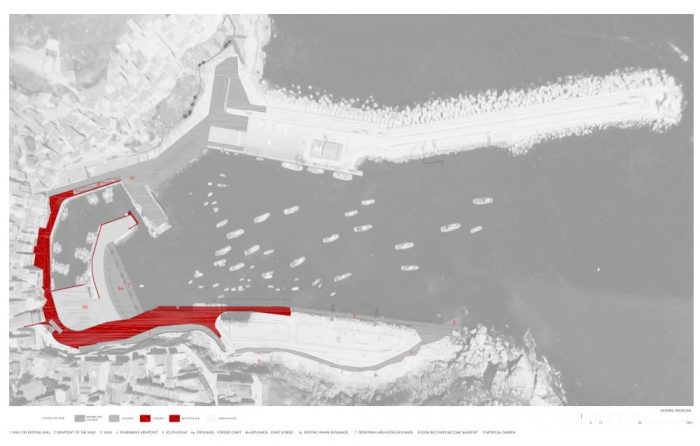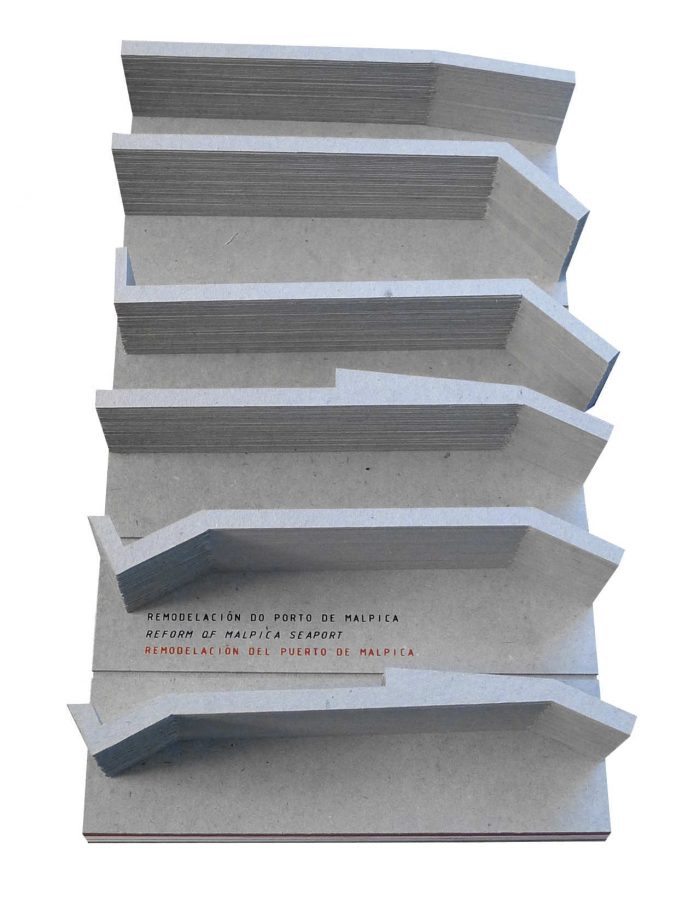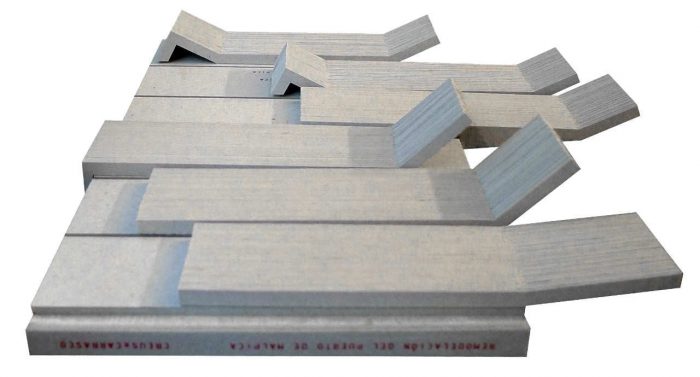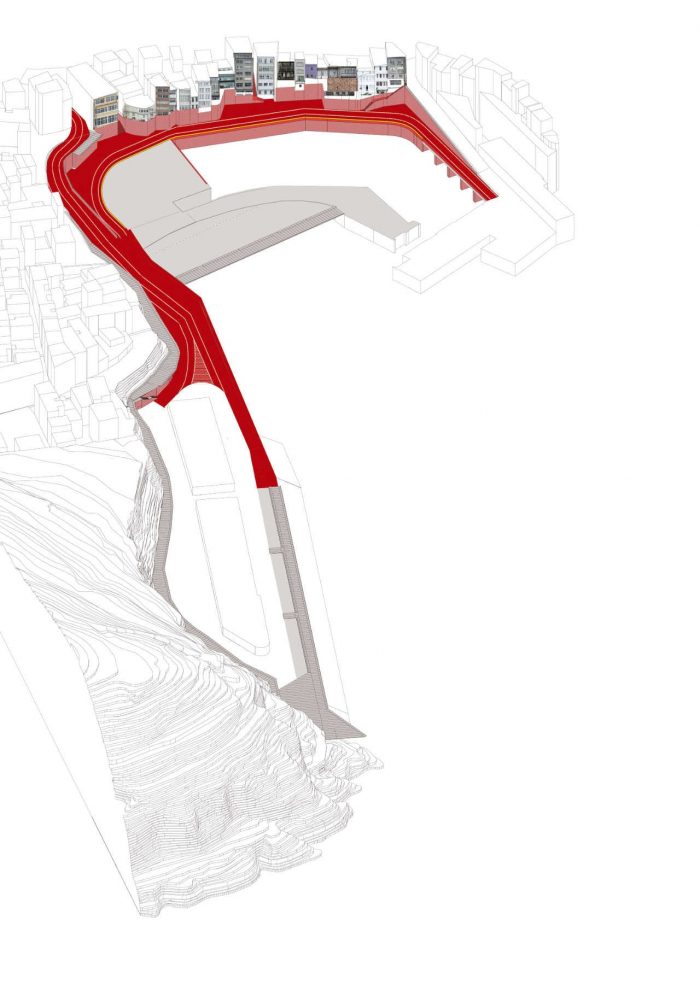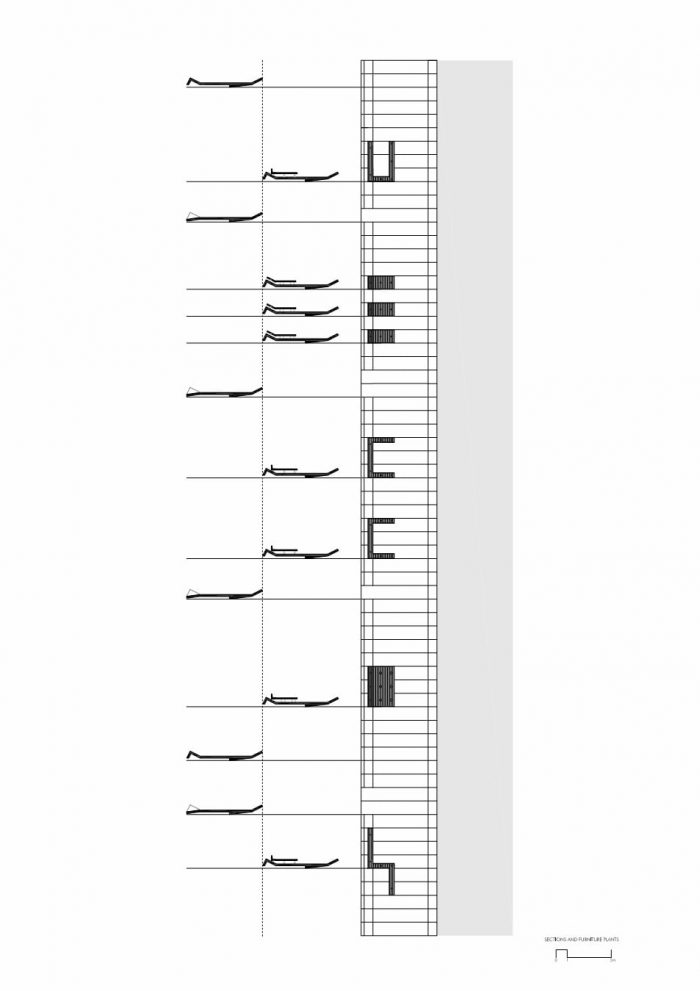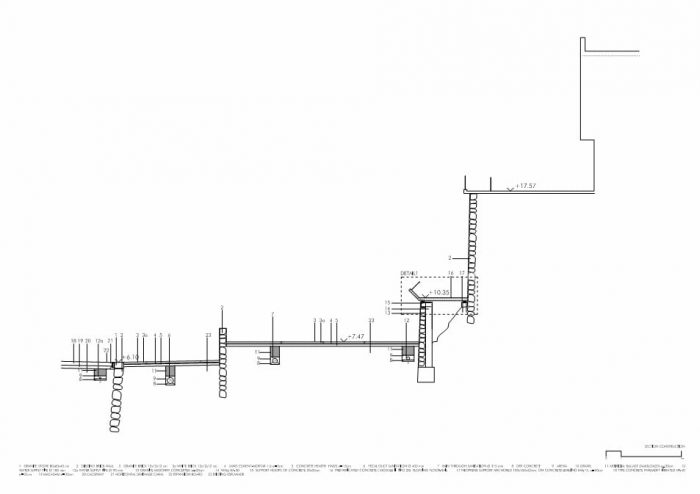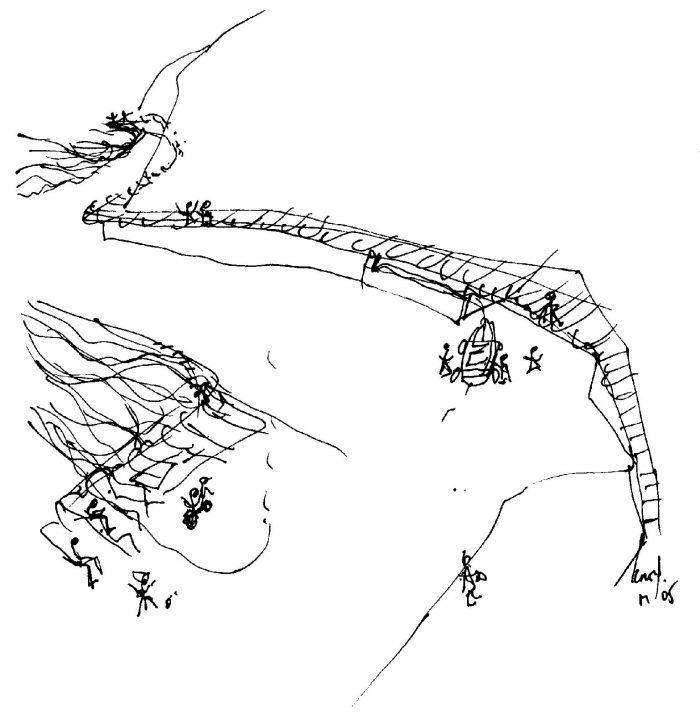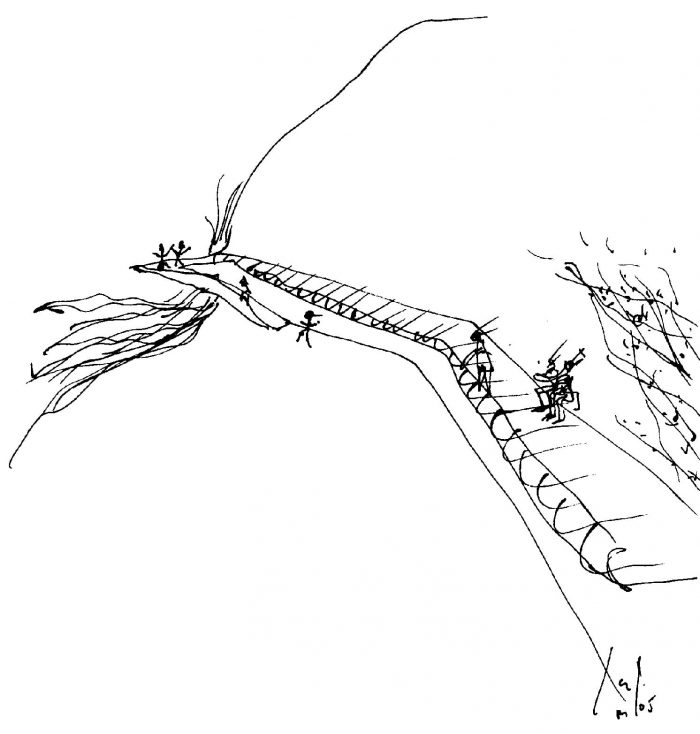这个港口重建项目是与港务局共同开发的,主要集中在可以创造公共空间的区域。港口被分析为一个相互关系和庇护所的地方,其渔业和景观的吸引力;一个独特的位置,通过坡道、楼梯和阳台让人感受到它在城镇中的存在。马蹄形港口的线性性质被最大限度地利用,有一条长廊,可以在中间水平上沿着悬崖走,在某种意义上停留在突出的岩石和墙顶上。攀岩者的区域,海鸥的巢穴和栖息的岩石突然出现,供游客漫步。
This harbour redevelopment project, developed in conjunction with the Port Authority, is primarily focused on zones where public space can be created. The harbour was analysed as a place for interrelations and shelter, with the appeal of its fishing industry and its views; a unique location that makes its presence felt in the town with ramps, stairs and balconies. The linear nature of the horseshoe-shaped harbour is exploited to the utmost with a promenade, accessible at an intermediate level that runs along the cliff, resting on outcrops and wall tops which inhabit it in a sense. The zone for rock climbers, gull’s nests and ensconced rocks appear out of nowhere for strolling visitors.
中间层,一个变色龙式的伪装,俯瞰着港口的活动,却不干涉它。几乎没有人记得,但码头甲板已经设置在与水闸相同的水平线上,6.10,这改善了东侧的视觉和空间整合,而过去在整个滨水区一览无余的废水管道已经被埋在一米的回填土下面。为房屋恢复的墙基,其中许多是石头,促进了对悬崖及其形象的解释。该项目强调了改善许多加利西亚渔村反复出现的情况的潜力,这些渔村的规模阻止了 “新石板 “的反应:事实上,对少数重复元素的处理,即这些组织模式,往往是隐藏的,具有被忽视的,本质上不吸引人的存在,可以产生一个不同的,也许是非结构化的,立体主义类型的美,但却反映了一个直接的,大众的意图。
The intermediate layer, a chameleon camouflage, overlooks the harbour activity without interfering in it. Almost nobody remembers, but the pier deck has been set at the same grade level as the sluice, 6.10, which has improved the visual and spatial integration of the eastern side, while the wastewater duct which used to be in full view along the full length of the waterfront has been buried beneath a metre of backfill. The recovered wall base for house, many of them in stone, facilitates an interpretation of the cliff and its image. The project emphasizes the potential for the improvement of a recurring situation in many Galician fishing village whose size prevents a “new slate” response: the fact that treatment of the few repeated elements, i.e., these organizational patterns, often hidden and with a neglected, intrinsically unattractive presence, can generate a different, perhaps unstructured, cubist type of beauty which is nevertheless a reflection of a direct, popular intentionality.
城镇记忆的组成部分之一,穆拉隆(Murallón)瞭望台,被扩大并与车辆交通分开。从港口南下的建筑物,包括一个仓库、一个车间和红十字会大楼,都被拆除,以释放和扩展更多的曲线空间,并建议从这一点开始,在港口平台上方4.5米处的石墙上建立一个新的长廊,通往Punta da Plancha。Pancha变成了一个瞭望台和一个连接地面的斜坡。沿途,悬崖用喷射混凝土处理,并种植了人工花园。最初要搬到长廊下面的车间,最终作为一个单元搬到了现有的亭子里面。
One of the components of the town’s memory, Murallón lookout, is expanded and separated from vehicular traffic. Buildings on the south descent from the harbour, including a warehouse, a workshop and the Red Cross building, are demolished to release and extend more space in a curve and propose, in continuity from this point, a new promenade to Punta da Plancha set on the stone wall at a constant 4.5 meters above the harbour platform. A Pancha is turned into a lookout and a ramp link to the ground. Along the way, the cliffs are treated with shotcrete and artificial gardens are planted. The workshop, which was initially to be moved to beneath the promenade, has finally been relocated as a unit inside an existing pavilion.
操作包括石墙和码头,平台是倾斜的,垂直的,水平的,平坦的,光滑的,被船触及和攻击的。新空间和用途的创造包括一个当代的元素和建筑方法,预制混凝土:组件-空间和表面线。
The operation includes stone walls and piers, platforms that are sloping, vertical, horizontal, flat, smooth, touched and attacked by the boats. The creation of new space and uses includes a contemporary element and building method, precast concrete: component-space and surface-line.
Architects: CREUSeCARRASCO Arquitectos
Area : 13710 m²
Year : 2009
Photographs :Xoan Piñón , CREUSeCARRASCO arquitectos
Country:Spain

